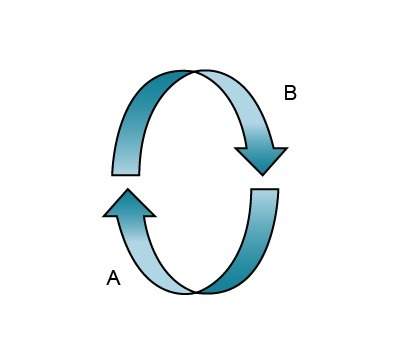
Physics, 01.07.2019 22:00 sedratkawaiah13
The diagram shows the motion of a group of water molecules over a heat source. how do the molecules at point a compare to the molecules at point b? check all that apply. they are closer together. they are farther apart. they are moving faster. they are moving slower. they have gained energy. they have lost energy.


Answers: 2


Another question on Physics

Physics, 22.06.2019 02:00
Chapter 23, problem 075 the figure shows a geiger counter, a device used to detect ionizing radiation (radiation that causes ionization of atoms). the counter consists of a thin, positively charged central wire surrounded by a concentric, circular, conducting cylindrical shell with an equal negative charge. thus, a strong radial electric field is set up inside the shell. the shell contains a low-pressure inert gas. a particle of radiation entering the device through the shell wall ionizes a few of the gas atoms. the resulting free electrons (e) are drawn to the positive wire. however, the electric field is so intense that, between collisions with gas atoms, the free electrons gain energy sufficient to ionize these atoms also. more free electrons are thereby created, and the process is repeated until the electrons reach the wire. the resulting "avalanche" of electrons is collected by the wire, generating a signal that is used to record the passage of the original particle of radiation. suppose the radius of the central wire is 24 âµm, the inner radius of the shell 2.3 cm, and the length of the shell 14 cm. if the electric field at the shell's inner wall is 2.8 ă— 104 n/c, what is the total positive charge on the central wire?
Answers: 1

Physics, 22.06.2019 11:00
Which sound characteristic is not affected by the relative motion of an object
Answers: 2

Physics, 22.06.2019 14:20
What are the starting materials for nuclear fission? two small nuclei two large nuclei a neutron and a large nucleus a neutron and a small nucleus
Answers: 2

Physics, 22.06.2019 21:00
Acentrifuge in a medical laboratory rotates at an angular speed of 3,700 rev/min. when switched off, it rotates through 54.0 revolutions before coming to rest. find the constant angular acceleration (in rad/s2) of the centrifuge. your response is within 10% of the correct value. this may be due to roundoff error, or you could have a mistake in your calculation. carry out all intermediate results to at least four-digit accuracy to minimize roundoff error. rad/s2
Answers: 1
You know the right answer?
The diagram shows the motion of a group of water molecules over a heat source. how do the molecules...
Questions

Mathematics, 21.05.2021 18:10


Mathematics, 21.05.2021 18:10



Social Studies, 21.05.2021 18:10


Mathematics, 21.05.2021 18:10

Mathematics, 21.05.2021 18:10


Spanish, 21.05.2021 18:10



History, 21.05.2021 18:10

Mathematics, 21.05.2021 18:10

Mathematics, 21.05.2021 18:10

Mathematics, 21.05.2021 18:10


Mathematics, 21.05.2021 18:10

Mathematics, 21.05.2021 18:10



